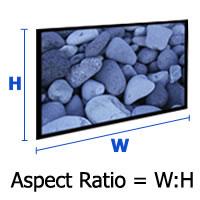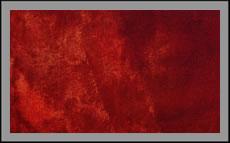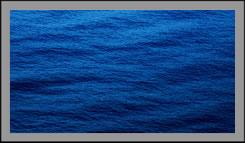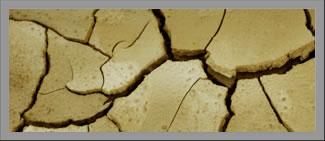If you have read our How to Select a Projector Screen Guide, you most likely have a good idea how to go about selecting a projection screen. One of the essential steps is determining which size screen you need. We carry an assortment of screens from Draper, Da-Lite, Dukane and Elite Screens, and each screen is offered in a variety of sizes. Sizes are broken down into formats: video or NTSC (4:3), HDTV (16:9), widescreen (1.85:1), square or slides (1:1), and various AV formats. The guide below will help you understand what format and size will best fit your situation. |
| |
|
| |
| Projector Screen Formats and Education |
|
 |
Screen formats are determined by the specific aspect ratio of the screen. Aspect ratio is the fractional relation of the width of a video image compared to its height. The two most common aspect ratios in home video are 4:3 (also known as 4x3, 1.33:1, or standard) and 16:9 (16x9, 1.78:1, or wide-screen). All the older TVs and computer monitors you grew up with had the squarish 4:3 shape--only 33 percent wider than it was high. On the other hand, 16:9 is the native aspect ratio of most HDTV programming; it is 78 percent wider than it is tall, or fully one-third wider than 4:3. |
|
| |
So which aspect ratio is best for you? Today, the most commonly sold aspect ratios screens for home theaters are 1.78:1 (16:9) and now growing 2.35:1 (CinemaScope). 16:9 aspect ratio screens are a perfect match to today's HD video projectors.
To figure out what aspect ratio may be best for you, you may consider the following:
If you are building a dedicated room geared mostly towards movie watching, then we would suggest a 2.40/2.35 Aspect Ratio screen since this is what most movies are usually shot in. However, when you watch 16:9 and 4:3 aspect ratio content on your 2.35/2.40 projection screen, you will have black bars on the left and right of the projected image.
If you are purchasing a screen for a media room or primary viewing of HDTV channels and video game playing, then we would suggest a 1.78:1 (16:9) projection screen. However, when you watch 2.35 and 1.85 movies you will have black bars above and below your projected image. When watching 4:3 content, you will have black bars on the sides of your projected image. |
|
 |
1:1 (Square or Slides)
Square format is 1:1 - this is most commonly used for slide projection. Square format screens can be rolled down or up to simulate Widescreen/HDTV viewing.
|
|
|
 |
1.33:1 (4:3)
Also referred to as 4:3, Standard Definition, NTSC or Academy. This aspect ratio is becoming the aspect ratio of the past as 16:9 HD (High Definition) is becoming the new medium. Many classic movies were made in this aspect ratio.
The 4:3 ratio for standard television has been in use since television's origins and has been used for many computer monitors. 4:3 is the aspect ratio defined by the Academy of Motion Picture Arts and Sciences as a standard after the advent of optical sound-on-film. By having TV match this aspect ratio, films previously photographed on film could be satisfactorily viewed on TV in the early days of the medium (i.e. the '40s and the '50s). When cinema attendance dropped, Hollywood created widescreen aspect ratios (such as the 1.85:1 ratio mentioned later) in order to differentiate their industry from the TV. |
|
|
 |
1.66:1 (5:3)
Also reffered to as 5:3 and sometimes expressed more accurately as 1.67.
This is the 35 mm European widescreen standard aspect ratio.
This is not a standard aspect ratio in the USA. |
|
|
 |
1.78:1 (16:9)
Also referred to as 16:9, High Definition, HDTV or Widescreen. This is the international standard format of HDTV as used in the United States, Australia, Japan and Canada as well as in Europe on satellite and non-HD widescreen television (EDTV) PALplus. The 1.78:1 aspect ratio was the compromise between the 35 mm US and UK widescreen standard (1.85:1) and the 35 mm European widescreen standard (1.66:1)
This is now a standard aspect ratio in the USA and all HD projectors (720 or 1080) natively project at this Aspect Ratio. This is also one of the most popular choices for home theaters and media rooms when sports and gaming outweighs movie watching. |
|
|
 |
1.85:1
Also known as the 35 mm US and UK widescreen standard for theatrical film. This is an aspect ratio allot of past and recent films were shot with. It was widely used to save money on film stock while shooting. This aspect ratio is slightly wider than 1.78:1. |
|
|
 |
2.35:1 (CinemaScope)
This is the 35 mm anamorphic standard prior to 1970, used by CinemaScope ("Scope") and early Panavision. The anamorphic standard has subtly changed so that modern anamorphic productions are actually 2.39 (2:40:1) but often referred to as 2.35 anyway due to old convention.
A majority of major released films use this aspect ratio and this is why most people choose this aspect ratio screen when building a dedicated home theater where movie watching out weighs sports and gaming. This aspect ratio is much wider than the HDTV 1.78:1 |
|
|
 |
2.40:1 (CinemaScope)
Often referred to as "Filmed in Panavision" or 'Scope. This is the 35 mm anamorphic from 1970 onwards. Really 2.39:1 but usually rounded up to 2.40:1.
A majority of major released films released after 1970 use this aspect ratio. This is why most people choose this aspect ratio screen or 2.35:1 when building a dedicated home theater where movie watching out weighs sports and gaming.
(Note that anamorphic refers to the compression of the image on film to maximize a standard 4 perf academy area but presents the widest of aspect ratios.) |
|
|
| |
| What Size Screen Do You Need? |
|
| |
Once you have decided on a format, you will need to select an actual size for your projector screen. Below are the standard sizes for Draper and Da-Lite. Not every screen is available in every size. If you have questions, just give us a call toll-free at 1-800-637-3181. |
| |
| Draper Projector Screen Sizes |
|
| |
| Video Format (4:3 Aspect Ratio) |
Image Diagonal |
Image Height |
Image Width |
6' |
42.5" |
56.5" |
7' |
50" |
66.5" |
100" |
60" |
80" |
10' |
72" |
96" |
11' |
78" |
104" |
150" |
87" |
116" |
15' |
108" |
144" |
200" |
118" |
158" |
210" |
126" |
168" |
240" |
141" |
188" |
| HDTV Format (16:9 Aspect Ratio) |
Image Diagonal |
Image Height |
Image Width |
65" |
31.75" |
56.5" |
73" |
36" |
64" |
82" |
40.5" |
72" |
92" |
45" |
80" |
106" |
52" |
92.5" |
119" |
58" |
104" |
133" |
65" |
116" |
161" |
79" |
140" |
184" |
90" |
160" |
193" |
94.5" |
168" |
220" |
106" |
188" |
| AV Format (1:1 Aspect Ratio) |
Image Diagonal |
Image Height |
Image Width |
71" |
50" |
50" |
85" |
60" |
60" |
99" |
70" |
70" |
119" |
84" |
84" |
136" |
96" |
96" |
153" |
108" (9') |
108" (9') |
170" |
120" (10') |
120" (10') |
204" |
144" (12') |
144" (12') |
238" |
168" (14') |
168" (14') |
272" |
192" (16') |
192" (16') |
| Widescreen Format (1.85:1 Aspect Ratio) |
Image Diagonal |
Image Height |
Image Width |
99" |
47" |
87" |
108" |
50" |
92" |
120" |
56" |
104" |
132" |
63" |
116" |
162" |
76" |
140" |
182" |
86.5" |
160" |
190" |
91" |
168" |
218" |
102" |
188" |
|
| |
| Da-Lite Projector Screen Sizes |
|
| |
| Video Format (4:3 Aspect Ratio) |
Image Diagonal |
Image Height |
Image Width |
60" |
36" |
48" |
72" |
43" |
57" |
84" |
50" |
67" |
96" |
57" |
77" |
100" |
60" |
80" |
120" |
69" |
92" |
150" |
87" |
116" |
180" |
105" |
140" |
200" |
120" |
160" |
210" |
123" |
164" |
240" |
141" |
188" |
| HDTV Format (16:9 Aspect Ratio) |
Image Diagonal |
Image Height |
Image Width |
92" |
45" |
80" |
106" |
52" |
92" |
110" |
54" |
96" |
119" |
58" |
104" |
133" |
65" |
116" |
159" |
78" |
139" |
188" |
92" |
164" |
216" |
106" |
188" |
220" |
108" |
192" |
| AV Format (1:1 Aspect Ratio) |
Image Diagonal |
Image Height |
Image Width |
71" |
50" |
50" |
85" |
60" |
60" |
99" |
70" |
70" |
108" |
60" (5') |
90" (7.5') |
119" |
84" |
84" |
120" |
72" (6') |
96" (8') |
130" |
72" (6') |
108" (9') |
136" |
96" (8') |
96" (8') |
151" |
84" (7') |
126" (10.5') |
153" |
108" (9') |
108" (9') |
170" |
120" (10') |
120" (10') |
173" |
96" (8') |
144" (12') |
204" |
144" (12') |
144" (12') |
238" |
168" (14') |
168" (14') |
272" |
192 (16') |
192 (16') |
305" |
216 (18') |
216 (18') |
|
| |
|
| |